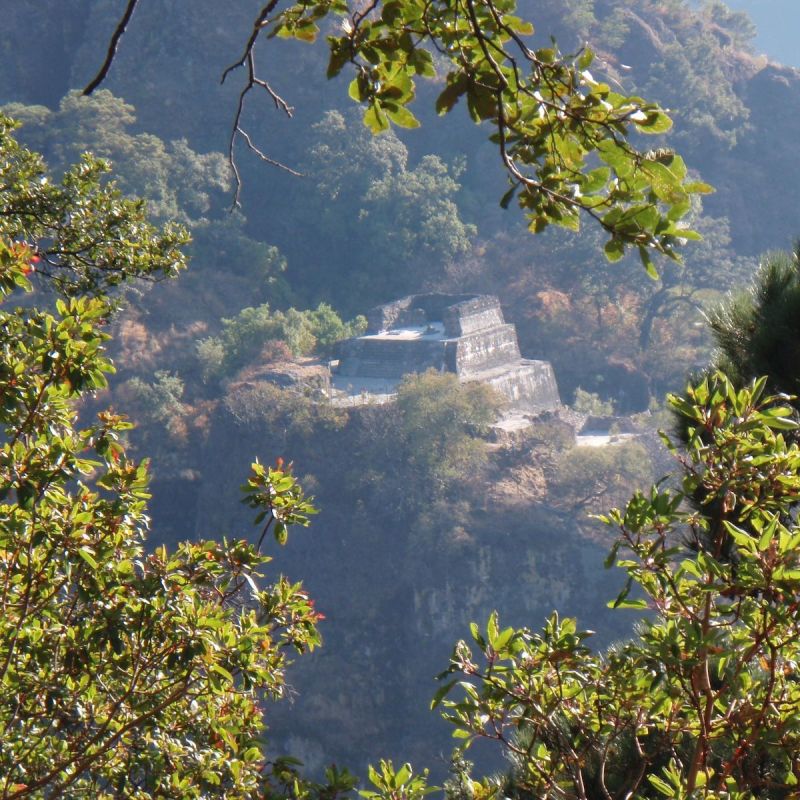
Mexico City, the world’s fifth largest city and home to 22 million people, is one of my favorite cities in the world, but it’s also a great base camp to explore nearby towns a few hours away. If you feel a need to escape the city’s high-voltage electric energy, consider taking a day off to visit one of the many nearby smaller communities that offer history, natural beauty, and charm.
Videos by TravelAwaits
You can reach these places by bus from one of Mexico City’s four main bus terminals (one at each compass point of the city); by renting a car; or by Uber or taxi. You can even negotiate with an Uber driver or taxista to be your driver for a day.
Another option is to take a tour. Companies such as Viator, Get Your Guide, Airbnb Experiences, and Tripadvisor offer 1-day tours to many of the destinations listed below. However you get there, I recommend going during the week, as these areas are popular and can get busy on the weekends.
In no particular order, here are six places to put on your list:

1. Tepoztlán
The “Sedona Of Mexico”
This small, charming town has an artistic, hippie ambiance, and sometimes is called the “Sedona of Mexico.” It’s one of the country’s 132 pueblos mágicos, the governmental program launched in 2001 to promote tourism in towns that offer natural beauty, cultural richness, history, archeology, cuisine, and art. About 40 minutes south of Mexico City, Tepotzlán offers ethnic restaurants, temazcales (Native sweat lodges), and live music on weekends.
The village is famous for its small 30-foot-high pyramid that dates back to the 12th century, Tepozteco, built on a cliff above town. A 1,200-foot climb in less than a mile to the 6,800-foot summit is definitely a workout, though you see families with young children regularly climbing it. As with all the hikes I mention, be sure you’re acclimated to the elevation before undertaking a climb.

Just below the viewpoint, you may get lucky and see clusters of what look like monkeys, but are actually tropical raccoons, playing and hanging from branches. From the monolith, you can also explore a network of other trails within the Tepozteco National Park.
Back in town, you can see the pre-Hispanic art in the Carlos Pellicer Cámara Museum, which houses over 1,000 pieces of pre-Hispanic art; wander around the weekend market; or just enjoy the peaceful vibes of the town.

2. Teotihuacán
Largest Pre-Columbian Site In Mesoamerica
The largest pre-Columbian site in Mesoamerica, once a political, religious, and cultural power center, is located 30 miles northeast of Mexico City. Get there as early as possible to avoid crowds. There’s a shuttle bus to the site within walking distance of many Mexico City hotels.
The archeological site dates from around 600 BCE. You can’t help but be impressed by the sheer scale of the structures and the exceptional architectural skills required by the ancients to build them.
If you’re in reasonably good shape, you can quickly get your day’s workout by climbing the Pyramid of the Sun; at 216 feet, one of the highest structures of its type in the Western Hemisphere. The Pyramid of the Moon, at 140 feet, has a large platform at the top where rulers performed rituals and both humans and animals were sacrificed, while people down below watched.
A 2.5-mile boulevard surreally named Avenue of the Dead runs through the site, linking the pyramids to the Temple of Quetzalcoatl (Temple of the Plumed Serpent), the Citadel, and other structures.

3. Tepotzotlán
Cobblestone Village
Not to be confused with Tepoztlán, this is a charming cobblestoned village 25 miles north of Mexico City. On its main square, the Plaza Hidalgo, you can visit the National Viceroyalty Museum, a former monastery that houses some of the most extensive liturgical art in Latin America. This museum is considered the second most important in the country (after Mexico City’s Museum of Anthropology).
In the same complex, visit the 17th-century, Jesuit-built San Francisco Javier Church — a UNESCO World Heritage site — known as the best example of the ornate Baroque architecture called Churrigueresque in the New World.
Tepotzotlán even has that rare thing: a nearby aqueduct you can actually walk across. The four-level, 18th-century Arcos del Sitio is the highest aqueduct in Latin America.

4. Puebla
UNESCO World Heritage Site
For a UNESCO World Heritage site located only 2 hours southeast of Mexico City, the country’s fourth largest city is surprisingly unknown outside the country. You could easily spend a few days here.
Many of the streets in el centro are lined with pastel-colored buildings, colonnades, and wrought-iron balconies dating to the late 19th century when the French occupied the city. The Cathedral, located on the zócalo (main square), is the second highest in Mexico, with 14 chapels and an octagonal altar. Visit the Capilla del Rosario, with intricate carvings covered in gold leaf, and the lacy white Iglesia de la Compañía de Jesús.
Puebla is also the home of the oldest library in the Americas, the elegant Biblioteca Palafoxiana, built in 1846. Its collection includes 45,000 books, ranging from the 15th to the 20th century.
Talavera pottery, Puebla’s iconic export, is made from clay slabs that are baked, glazed, and hand-painted. For the best selection, visit the workshop Uriarte and the Parian Market.
Don’t miss tasting Mexico’s national dish, mole poblano, a thick succulent sauce which, according to legend, nuns created by accident in the late 1600s. It’s made up of over 20 condiments, mainly chilies, chocolate, cinnamon, and cloves, all served over rice or chicken.

5. Great Pyramid Of Cholula
The Largest Structure In The World
Not as well-known as it should be, the Great Pyramid of Cholula, located 20 minutes from Puebla, has a base four times larger than the Great Pyramid of Giza in Egypt and nearly twice the volume.
The structure has a curious history. After the Spanish conquered Puebla, massacring thousands of Indigenous people in the process, they constructed a church (now a pilgrimage site) on top of what they thought was a hill. Unbeknownst to them, beneath the tiny church was an ancient pyramid. Starting in the 1930s, archeologists dug five miles of tunnels through the hill to uncover what turned out to be the largest artificial structure in the world.
A tourist train leaves Puebla’s centro three times a day for the ruins, taking 40 minutes. You’ll be dropped off at the pyramid where your ticket allows you access to the tunnels, a must-see, and the museum.
After seeing the pyramid, visit the town of Cholula, a pueblo mágico and the oldest continually inhabited town in Mexico. It’s famous for its legendary 365 churches, one per day of the year. In reality, there are only 37, but who’s counting?
Some are highly unusual: The facade of San Francisco de Acatepec is red brick and talavera (a type of Spanish pottery) covered with wild colors and geometric patterns, while the style of the Santa Maria Tonantzintla is called “Indigenous Baroque.” Every inch of the interior is filled with wood-carved faces.

6. The Former Mining Towns Of Hidalgo
The pueblos mágicos of Real del Monte, Mineral del Chico, and Huasca de Ocampo offer not only natural beauty, but a mirror into an eccentric chapter in Mexico’s history — the settlement of Cornish miners who arrived in the 1800s to work the silver mines. Visit any of the three towns, or get an overview by taking a 1-day tour. Dress warm, as these towns are very high in elevation.
Real Del Monte
Real del Monte, at 8,900 feet, has a distinctly British flavor with its sloping roofs and manicured gardens. Like all immigrants, the Cornish diaspora brought their culture with them. Their favorite fast food, Cornish pasties, or pastes in Mexico, are now a defining mark of Hidalgo’s identity. These wildly popular flaky empanada-type pastries come with savory or sweet fillings; not just traditional potatoes and mincemeat, but Mexican flavors like mole, chorizo, salsas, and chili. The paste is so popular that the town has an international festival devoted to it every October and a dedicated paste museum.
On a more somber note, the poignant Panteón Inglés (the English Cemetery) is located in a fir forest on a hilltop above town. The 750 tombstones, all marked with epitaphs in English, face in the direction of Britain.

Mineral Del Chico
Less than half an hour from Real del Monte is the cobblestone village of Mineral del Chico, nestled within the forested El Chico National Park. It’s an ideal base for exploring nature and a center for adventure sports such as rock climbing and rappelling. A famous viewpoint, the Peña del Cuervo, offers vistas of the village.
Huasca De Ocampo
Huasca de Ocampo, Mexico’s first pueblo mágico, is a small town famous for its pottery and for the nearby geological balsamic prisms — pipelike structures formed millions of years ago by the slow cooling of volcanic lava. Waterfalls, a suspension bridge, and two haciendas add to Huasca’s charm.
If you’re like me, you may love urban energy, but you also need an occasional reset. A day or two in a tranquilo town offers just the medicine to refresh. Then, cheerfully head back to a pulsing, high-energy Mexico City.
Related Reading:
